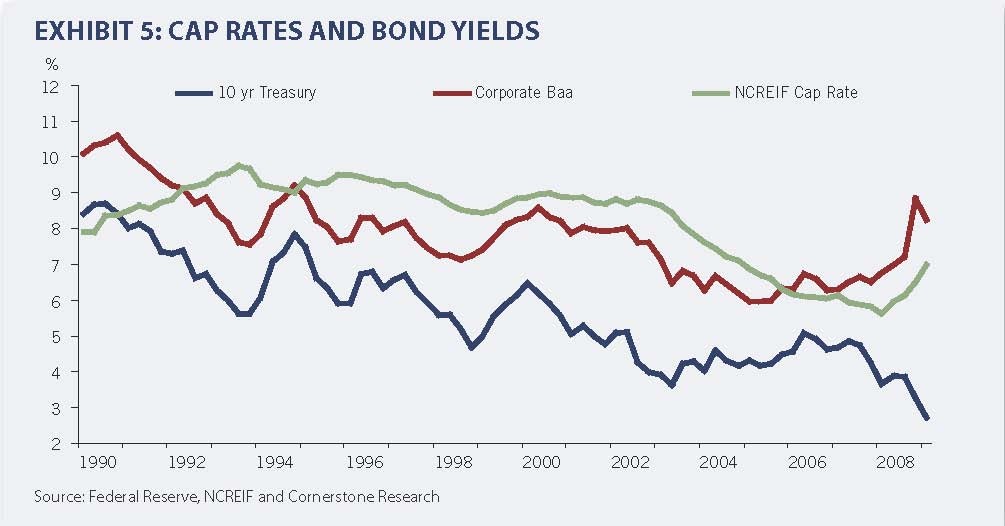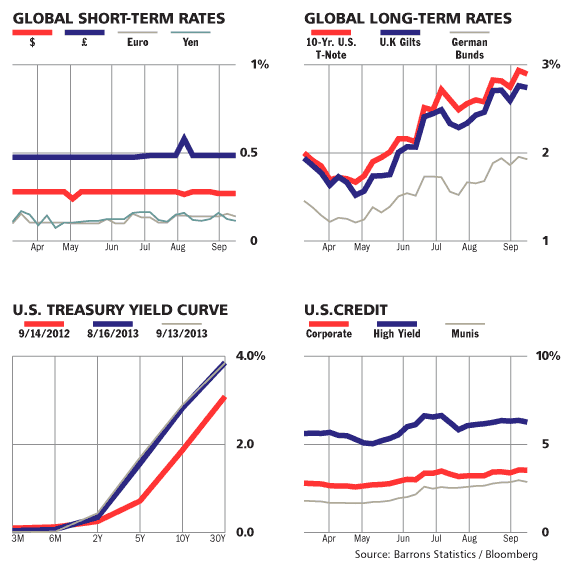Bond Yields and Prevailing Interest Rates
Post on: 4 Июнь, 2015 No Comment

Bonds help you to grow your purchasing power above the rate of inflation. With bonds, the prevailing interest rate environment is central to your yield, or total investment returns. To make successful bond market investments, it is critical for you to identify the link between economic trends and bond interest rates.
Credit Securities
Bonds are credit securities, where you loan money out to corporate and government institutions. In exchange, you collect regular interest payments until your loan principal is repaid at maturity. Bond prices do shift in value according to the economic environment. You may trade bonds at a premium or discount to par. For bonds, par value is $1,000.
Prevailing Interest Rates
Prevailing interest rates directly affect bond price performance. Falling interest rates support higher prices for existing bonds. At that point newer bonds pay out less money in interest. Investors then pay premium prices for the older bonds that make the higher interest payments. Alternatively, bonds that are already in circulation lose value when prevailing interest rates move higher. Newer bonds then pay higher interest rates compared to the old bonds, and the old bonds sell for a discount.
Coupon Rates and Yield to Maturity
Learn to differentiate between the bond coupon interest rate and yield to maturity. The coupon interest rate describes the amount of investment income you can expect to earn on a bond’s par value, which again is $1,000. Yield to maturity, however, takes into account your purchase price for the bond, which may be different from par.
For example, Bond Z may carry a 5 percent coupon interest rate. You can therefore expect to earn $50 (5 percent of $1,000) worth of annual interest payments on Bond Z. You may have actually purchased Bond Z for $800 – at a discount to par. You will still earn $50 worth of interest on your $800 investment. Your yield to maturity is then actually 6.25 percent ($50/ $800 = 6.25 percent).

The Federal Reserve
The Federal Reserve Board manages the interest rate environment through monetary policy. In recession, you can expect the Fed to lower interest rates to encourage people to take out loans and invest money. At that point, prices for existing bonds should also increase. Conversely, the Fed will drive interest rates higher to shield a growing economy from inflation. New bonds will then offer higher interest payments, while old bonds lose value.
Interest Rate Risks
Short-term changes in interest rates are extremely difficult to predict. Interest rates account for an almost infinite amount of factors, which include foreign exchange rates, government spending, inflation, and gross domestic product growth. As a bondholder, interest rate risk refers to a sharp increase in rates that would cause your current investment to lose value.
To manage interest rate risk, you can buy bonds with different maturity dates. For example, your Bond X matures in one month, while Bond Y matures in one year. If interest rates move higher, you can reinvest money from Bond X to quickly take advantage of the new rates. If rates fall, you may hold Bond Y to continue collecting high interest payments.














